It’s Not Just the War, Stupid
A 13-year veteran of the Gallup Poll presents some counterintuitive conclusions about the real motivations underlying Americans' votes on Tuesday -- and also teases out some unexpected data about the youth vote.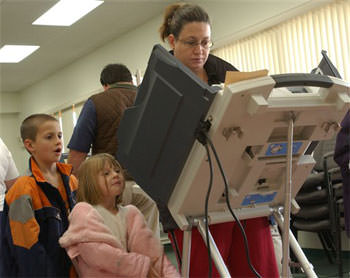
There can be little doubt that public disaffection with the war in Iraq was a major factor in the Democratic tsunami that rolled over the country this past Election Day.
Indeed, the emerging consensus appears to be that the Democratic victory in Election 2006 was due primarily to public rejection of the war in Iraq. On “NBC Nightly News” the evening after the election, Brian Williams opened the program by making just such a declaration. Robin Toner of The New York Times wrote the day after the election that “this was a nationalized election, and Mr. Bush and Iraq were at the center of it.” On CNN, Bill Schneider cited election night exit poll results that purported to show voters identifying Iraq as the single most important determinant of their vote.
And President Bush reinforced the interpretation, noting at his press conference the day after the election that he recognized voters were not satisfied with the level of progress in Iraq, and that Secretary of Defense Donald Rumsfeld was resigning so the president could get a set of “fresh eyes” to evaluate the administration’s strategy in the war.
Before conventional wisdom coalesces around the notion that this was an antiwar election, it’s worthwhile to consider what other factors contributed to the rejection of Republican rule. Even as Schneider identified Iraq as the most important issue based on the exit poll, a graph on the screen behind him showed other issues measured by the same poll to be more important. Schneider’s co-anchor, Paula Zahn, noted the discrepancy and wondered aloud whether the percentages weren’t reversed, because Iraq was the least frequently mentioned issue among the four on the chart. It was an awkward moment for Schneider, CNN’s public opinion guru, because the polling data contradicted the framework he was trying to put around the election.
The exit poll Schneider mentioned was conducted election night by the National Election Pool, the consortium of five networks and the Associated Press that funds the election night projection system. A representative sample of more than 13,000 voters from around the country was interviewed as the people exited from their voting stations. Among other things, voters were asked how important each of several issues was to their vote. The results are instructive:

The three most often cited issue areas are corruption/ethics, the economy, and terrorism. Forty-one percent of the voters said corruption was “extremely” important to their vote, and 33 percent more said “very” important — for a total of 74 percent. Note that Iraq comes in fifth behind “value issues” when we rank-order the items by the percentage who say “extremely” important (35 percent), and it comes in fourth if we rank-order the items by the percentage who say either “extremely” or “very” important (67 percent).
Probably more significant to the interpretation of these results is the fact that all of the issue areas, except for the Saddam Hussein verdict, are deemed “important” by about six in 10 voters or more. In other words, this was not a one-issue election, but rather a multi-issue election, with no doubt many more issues of concern to the voters than were included on the exit poll questionnaire.
The nature of the public’s message was perhaps best captured in a brief television story on “NBC Nightly News” the day after the election when people in a Missouri restaurant were asked why the Democrats won. Most of the comments were general in nature, about the “mess” in Washington and about how things weren’t being done. When pressed about the Iraq war, one person acknowledged, “Well, that didn’t help.” I got the same feeling from these exchanges that I get from the exit poll results — that there were simply “a whole lot of issues” that people felt were not being adequately addressed by Congress and the president, and the war in Iraq was just one of them.
More fundamentally, the election appears to be a widespread rejection of the Republican Party’s performance in the past several years — in areas that include Katrina, Iraq, torture, corruption, scandals, the economy, energy, the environment and the federal budget. To bill the election as antiwar is to miss the significance of the electoral rout.
We don’t need polls to be convinced that the Democratic victories across the country were more about Republicans than about any specific issue area. In my own home state of New Hampshire, Democrats succeeded in winning not only both congressional districts, a historic achievement by itself, but in making the whole state government Democratic (House, Senate, governor and executive council) for the first time in over a century and a half. According to The New York Times, Democrats made significant gains in many other states as well, reflecting a general voter disgruntlement with Republicans at the local level similar to the rejection of the GOP at the national level. The local issues were clearly not the Iraq war, but more broadly a loss of confidence in the Republicans to govern.
If we had to boil the election to just one phrase, it might well be the one used frequently by Carol Shea-Porter in the 1st Congressional District in New Hampshire. No one expected her to beat popular incumbent Republican Jeb Bradley. Her television ads were sparse, and they were always positive about what she would do — not one attack ad about her opponent. In her appearances in homes throughout the district, her closing phrase always elicited a strongly positive reaction: “I’ll go to Washington to represent the other 99 percent of us.” With its indirect reference to the Bush tax cuts that disproportionately benefit the upper 1 percent in income, the promise encapsulated the frustration of voters who felt the Republicans were just not representing them anymore on a whole range of issues.
We’ve seen other public rejections of one party or another throughout American history, with 1994 the most recent such experience for the Democrats, when no war contributed to their ouster. This time, the Democrats promise a different approach to governing and to dealing with congressional corruption, much as the Republicans did when they won 12 years ago. The voters are watching.
Shifts in the Youth Vote Bode Well for Democrats
In Election 2006, voters under the age of 30 once again showed more support for Democrats than did older voters. According to the exit polls on election night by the National Election Pool (the network consortium of the five networks and the Associated Press), 60 percent of young people voted for a Democratic congressional candidate, compared with 52 percent of older people. In Election 2004, young voters also gave more support to the Democratic candidates by about eight percentage points — 55 percent, compared with 47 percent Democratic support among older voters.
A new study by Young Voter Strategies suggests even more good news for the Democrats. Youth voter turnout increased from about 20 percent in 2002 to 24 percent in 2006. According to this study, the youth vote constituted about 13 percent of all voters, up by about two percentage points from 2002. The chart below illustrates the changes:

Despite the improvement from the 2002 to the 2004 midterm elections, there is still a way to go before young people exert a force equal to their representation in the population at large. U.S. census statistics suggest that about 16 percent of the population is under age 30, compared with the 11 to 13 percent of the electorate that is under 30.
In the presidential election of 2004, there was a higher turnout among young people than there typically is in midterm elections. According to the National Election Pool exit polls, 16 percent of the 2004 electorate was under the age of 30, comparable to the number of young people in the population as a whole.
iThe percentages of voters age 18-29 are obtained from national exit polls. The numbers of votes cast are obtained from the Associated Press as of 9 a.m. the day following the election. Estimated voter turnout is obtained by taking the estimated number of votes cast and dividing it by the estimated population of 18 to 29-year-old citizens from the March Current Population Survey.
iiThis number is likely to increase over the next days and weeks due to absentee and provisional ballots. For example, in 2002 the vote tally for the House of Representatives on the day after the election rose by 10 million over the subsequent weeks. As the vote tally rises, youth turnout may rise somewhat.
David W. Moore, a writer and polling consultant, recently retired as senior editor at the Gallup Poll, where he worked from 1993 until 2006. For over 20 years prior to that, he was a professor of political science at the University of New Hampshire.
Moore recently completed his second two-year term on the governing council of the American Association for Public Opinion Research, the foremost organization of public opinion pollsters in the country. He is the author, most recently, of “How to Steal an Election: The Inside Story of How George Bush’s Brother and FOX Network Miscalled the 2000 Election and Changed the Course of History.”
Moore’s homepage is davidwmoore.us
Your support matters…Independent journalism is under threat and overshadowed by heavily funded mainstream media.
You can help level the playing field. Become a member.
Your tax-deductible contribution keeps us digging beneath the headlines to give you thought-provoking, investigative reporting and analysis that unearths what's really happening- without compromise.
Give today to support our courageous, independent journalists.

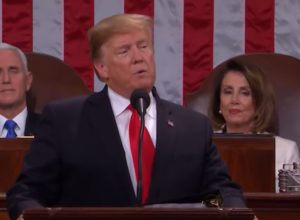
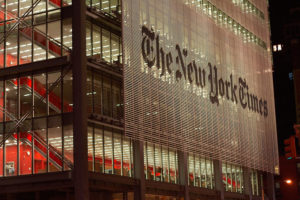
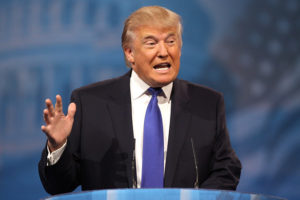
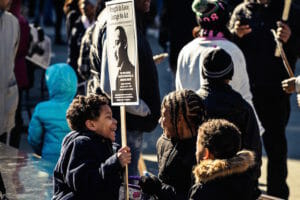
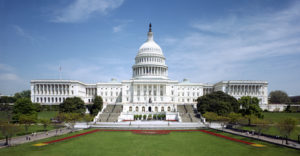
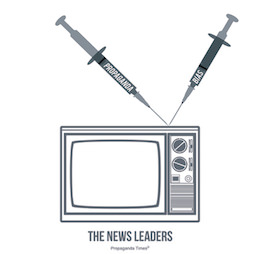


You need to be a supporter to comment.
There are currently no responses to this article.
Be the first to respond.